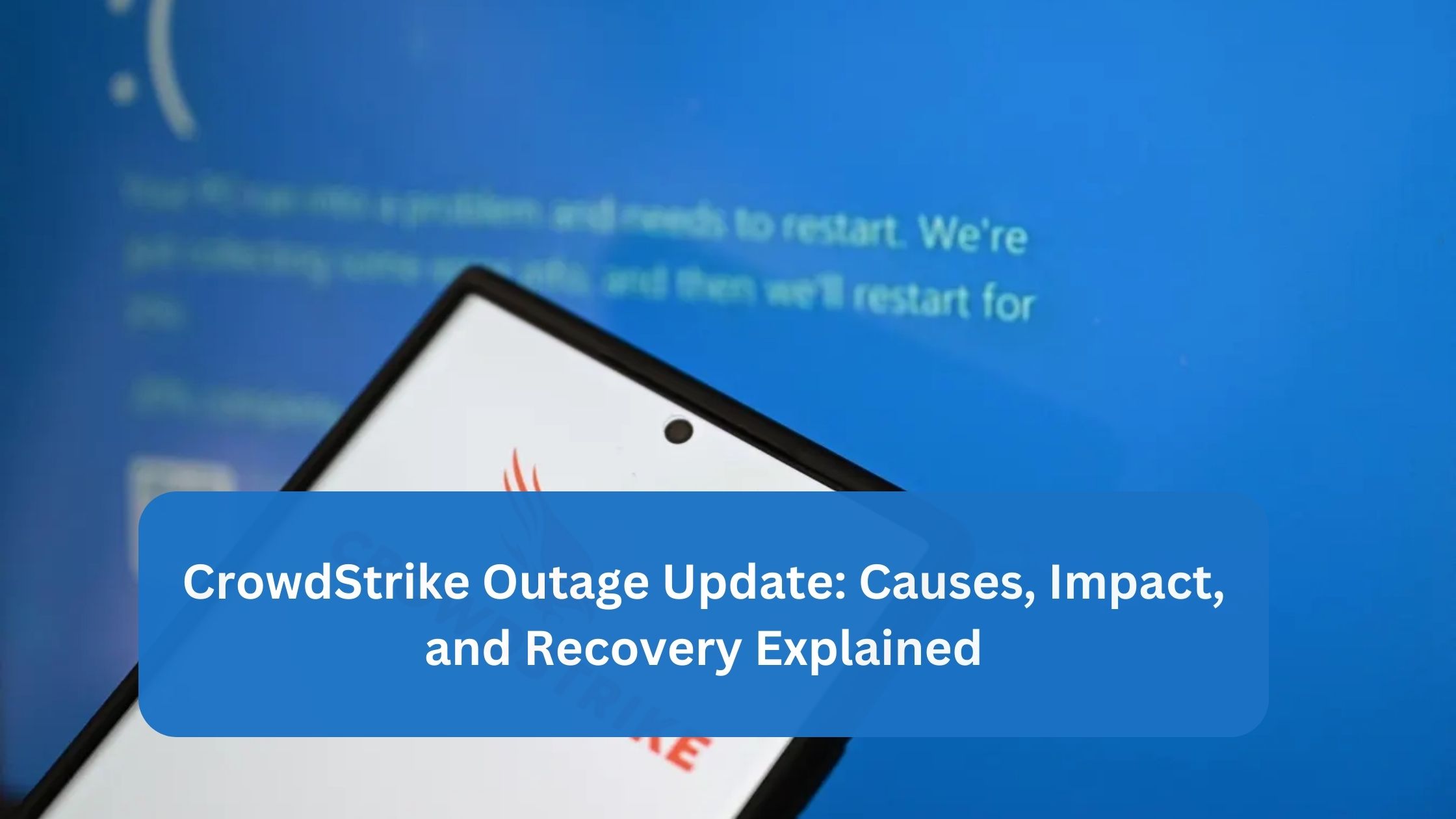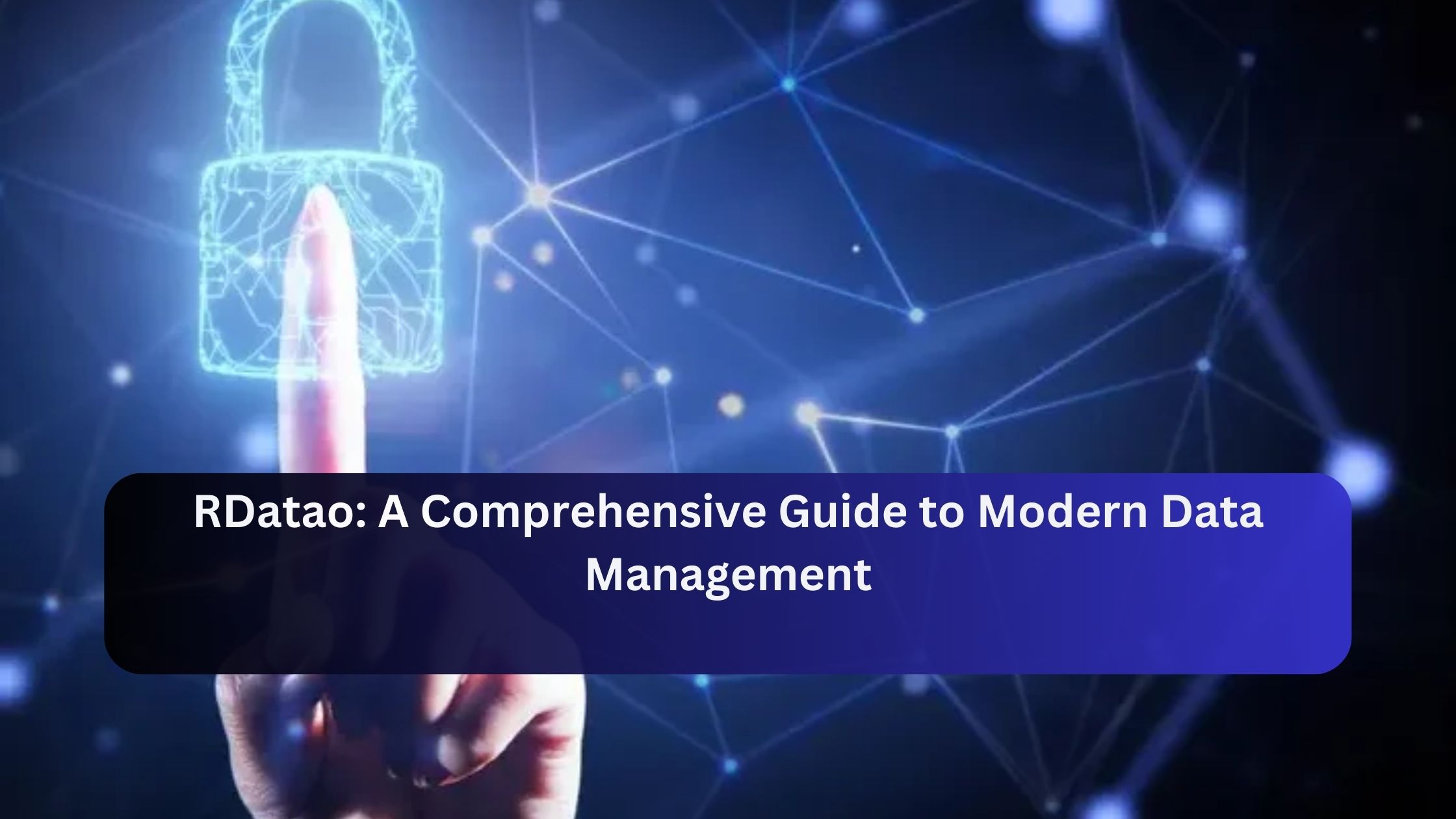CrowdStrike, a leader in cybersecurity, recently made headlines for all the wrong reasons. A recent CrowdStrike update caused a massive IT outage, crashing millions of Windows systems and disrupting critical services and business operations. CrowdStrike has since addressed the issue and committed to improving update processes to prevent future incidents.
For businesses that rely heavily on CrowdStrike’s state-of-the-art cybersecurity solutions, this incident has been a major wake-up call. In this article, we dive deep into the recent CrowdStrike outage update, exploring what went wrong, the broader implications for businesses, and what the future holds.
What Is CrowdStrike?
CrowdStrike is a renowned cybersecurity company that offers cloud-delivered endpoint protection, threat intelligence, and response services. Known for its sophisticated Falcon platform, CrowdStrike uses artificial intelligence (AI) and machine learning to detect threats in real-time, providing an essential layer of security for businesses of all sizes.
Also Read: Understanding the “404 Error Code”: A Comprehensive Guide
Key Features and Services Offered by CrowdStrike
- Endpoint Protection: Real-time monitoring and protection of devices against known and unknown threats.
- Threat Intelligence: Continuous monitoring of global threat actors, allowing businesses to stay ahead of potential attacks.
- Incident Response: Rapid containment and remediation services in the event of a breach.
- Cloud-Native Architecture: Scalability and adaptability to evolving cyber threats with cloud-based solutions.
The Recent CrowdStrike Outage: What Happened?
The CrowdStrike outage began with a routine software update that went horribly wrong. This update, intended to improve security features, instead led to the crashing of millions of Windows systems worldwide. Businesses across various sectors experienced significant downtime, disrupting their operations and causing major financial and reputational damage.
Timeline of the Outage Event
- Initial Update Release: CrowdStrike rolled out a routine update aimed at enhancing security protocols.
- First Reports of Crashes: Within hours, users began reporting widespread system crashes, primarily on Windows-based machines.
- CrowdStrike’s Acknowledgement: CrowdStrike confirmed the outage and began investigating the cause.
- Resolution Efforts: Efforts to roll back the faulty update and restore affected systems began immediately, but full recovery took several hours.
The Scope of the Outage
The impact of the CrowdStrike outage was massive, affecting millions of users globally. From small businesses to large enterprises, the ripple effect was felt across multiple industries, including healthcare, finance, and retail.
Specific Industries Affected the Most
- Healthcare: Hospitals and clinics faced critical downtimes, affecting patient care and administrative functions.
- Finance: Financial institutions experienced interruptions in trading systems, online banking, and customer support services.
- Retail: Retailers faced disruptions in point-of-sale systems, inventory management, and online order processing.
Causes of the CrowdStrike Outage
The root cause of the CrowdStrike outage was linked to a misconfigured update that was not fully compatible with Windows systems. This incompatibility led to a cascade of failures, crashing systems and disrupting operations on a large scale.
Misconfigurations and Update Issues
- Technical Failures: The update contained bugs that were not identified during testing, highlighting flaws in the pre-release testing process.
- Software Update Risks: Updates, while necessary for maintaining security, can also introduce vulnerabilities if not thoroughly vetted.
The Immediate Response from CrowdStrike
CrowdStrike responded swiftly, acknowledging the outage and communicating directly with affected users. Their response included detailed guidance on how to roll back the update and restore system functionality.
Steps Taken to Mitigate the Impact
- Hotfix Releases: CrowdStrike released a series of hotfixes to address the immediate issues caused by the update.
- Customer Support Mobilization: Increased support staff availability to assist customers in troubleshooting and recovery efforts.
- Post-Outage Communication: Regular updates were provided to keep users informed about progress and expected resolution times.
Impact on Business Operations
The outage had a profound impact on business operations, causing both immediate and long-term disruptions. From halted production lines to paralyzed customer service centers, the fallout was severe.
Read More: Understanding SIEM: A Comprehensive Guide
Real-World Examples of Affected Businesses
- Manufacturing Firms: Production delays and equipment malfunctions due to system crashes.
- E-commerce Websites: Downtime resulted in lost sales and dissatisfied customers.
- Call Centers: Inability to access necessary software left many call centers unable to assist customers.
Lessons Learned from the CrowdStrike Outage
This incident has underscored the importance of robust contingency planning and the need for businesses to understand the vulnerabilities of their cybersecurity software.
Strategies to Avoid Similar Outages in the Future
- Rigorous Testing Protocols: Updates must undergo comprehensive testing across various platforms to identify potential compatibility issues.
- Staged Rollouts: Gradually rolling out updates can help catch errors before they affect all users.
- Improved Communication: Transparent communication with customers during outages can mitigate frustration and maintain trust.
User Reactions and Community Feedback
The response from users was mixed, with many expressing frustration over the lack of foresight in the update process. Social media was flooded with comments from IT professionals and business owners sharing their experiences.
Feedback from IT Professionals
- Call for Better Testing: A common sentiment was the need for more stringent pre-release testing protocols.
- Support Satisfaction: While the outage was disruptive, CrowdStrike’s quick support response was generally appreciated.
CrowdStrike’s Recovery Plan
CrowdStrike worked around the clock to restore normalcy, deploying hotfixes and providing continuous support to affected businesses. The company has since pledged to overhaul its update process to prevent similar incidents in the future.
Post-Outage Measures and Future Preventive Steps
- Enhanced Update Testing: CrowdStrike is refining its testing protocols to ensure broader compatibility checks.
- Improved Monitoring: Increased real-time monitoring to detect potential update failures faster.
- Customer Assurance: CrowdStrike has committed to being more proactive in communicating with customers about potential risks and updates.
Technical Analysis of the Outage
The technical analysis revealed that the update contained coding errors and compatibility issues with specific versions of Windows. This technical oversight led to conflicts within the operating system, resulting in widespread crashes.
Why the Update Crashed Windows Systems
- Compatibility Conflicts: The update was not fully compatible with certain configurations, leading to system failures.
- Inadequate Testing: The testing phase did not adequately simulate real-world environments, leaving critical bugs undetected.
Legal and Financial Repercussions
The financial impact of the outage is still being assessed, but for some businesses, the cost has been substantial. Legal ramifications are also being explored, with discussions around potential compensation for affected companies.
Potential Legal Actions Against CrowdStrike
- Liability Issues: Businesses may seek compensation for the downtime and financial losses incurred.
- Class Action Possibilities: There is a possibility of collective legal actions from affected parties.
How to Protect Your Business from Similar Outages
Businesses can take several steps to mitigate the impact of similar outages, including implementing backup systems, regularly updating their software, and conducting thorough risk assessments.
Proactive Monitoring and Incident Response Planning
- Backup Systems: Always have a backup of critical systems and data to ensure continuity during outages.
- Regular Software Audits: Routine checks on software compatibility and functionality can prevent unplanned disruptions.
- Incident Response Teams: Having a dedicated team ready to respond to outages can minimize downtime and restore operations quickly.
The Future of Cybersecurity Software Updates
In the wake of this incident, there’s a growing focus on improving the reliability of software updates in the cybersecurity sector. CrowdStrike has taken steps to enhance its processes, and the industry as a whole is likely to follow suit.
Also Read: Understanding Single Sign-On (SSO): A Comprehensive Guide
Trends in Cybersecurity Software Updates
- AI-Enhanced Testing: Leveraging AI for predictive testing and error detection.
- User-Driven Feedback Loops: Incorporating user feedback more effectively into update development and testing phases.
- Cloud-First Strategies: Utilizing cloud-based updates that can be rolled back easily if issues arise.
FAQs
1. What caused the CrowdStrike outage?
The outage was caused by a misconfigured software update that led to compatibility issues with Windows systems, resulting in widespread crashes.
2. How many systems were affected by the CrowdStrike outage?
Millions of Windows-based systems globally were impacted by the outage, affecting various industries.
3. What industries were most impacted by the CrowdStrike outage?
The most affected industries included healthcare, finance, and retail, where critical services were disrupted.
4. How can businesses protect themselves from such outages?
Businesses can protect themselves by implementing backup systems, conducting regular software audits, and having a dedicated incident response team in place.
5. What steps has CrowdStrike taken to prevent future outages?
CrowdStrike has enhanced its update testing protocols, improved real-time monitoring, and committed to more transparent communication with customers regarding updates and potential risks.
Conclusion
The CrowdStrike outage was a stark reminder of the vulnerabilities inherent in modern cybersecurity systems. While updates are essential for maintaining security, they also carry risks that can have far-reaching consequences.
The lessons learned from this incident will undoubtedly shape the future of software updates, with a renewed focus on rigorous testing, better communication, and robust contingency planning. For businesses, the key takeaway is clear: always be prepared for the unexpected.



